Individuality Lesson Plan

Lesson Plan Mindmap for Individuality – Click to Enlarge
CLICK ICONS TO JUMP DIRECTLY TO EACH SUBJECT ON THIS PAGE








INDIVIDUALITY LESSON PLAN
This page is a free-shared lesson plan archive for teaching all educational subjects within the context and theme of “Individuality”. It is purposed for use in community education environments, homeschool environments, traditional schooling environments, or as a supplemental and fun addition to any education program. As part of the complete Education for Life Program, this lesson plan is specifically designed to work in conjunction with the other components: Foundations of Teaching, Curriculum, Teaching Strategies, Learning Tools and Toys, Evaluation Model, and The Ultimate Classroom. If you’d like to learn how all these components work together, click here. Click here for the specifics focused on just using the lesson plans:
CLICK HERE FOR A DETAILED TUTORIAL ON HOW TO USE THIS LESSON PLAN
NOTE: The colors are provided as a possible linear progression (red/easiest to violet/most challenging) for people that might prefer a more linear structure. Our core philosophy, however, is that through creativity every color can be made easy or challenging for any learning level.
RELATED PAGES (mouse-over for descriptions and click for complete pages)
EDUCATION OVERVIEW | HOW TO USE THIS COMPONENT | OUR OPEN SOURCE PURPOSE

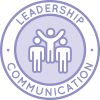
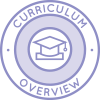
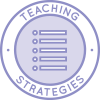
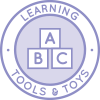
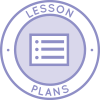
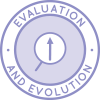
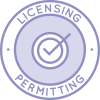
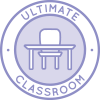
WAYS TO CONTRIBUTE TO EVOLVING THIS EDUCATION PROGRAM WITH US
SUGGESTIONS | CONSULTING | MEMBERSHIP | OTHER OPTIONS
A NOTE ABOUT ALL ONE COMMUNITY LESSON PLANS
The One Community lesson plans are intentionally designed for use in ANY educational environment and with ALL educational, cultural, religious/spiritual, and philosophical approaches to teaching and learning. They are designed without an ideological approach and specifically so they can be adapted to include the views, preferences, methodologies, and/or ideologies preferred by different parents and teachers.
For maximum flexibility and adaptation, they are also designed to be combined to teach multiple subjects at the same time. Doing this increases the creativity, effectiveness, and fun of your learning environment. Once we are on the property and operating our version of the complete school and Education for Life program, we will be adding video examples of how to combine the lessons. In the meantime, visit the Teaching Strategies page for a list of suggestions.
ARTS AND TRADES
CLICK HERE FOR THE COMPLETE SUBJECT OUTLINE FOR ARTS & TRADES
 | TEACHING ARTS AND TRADES WITHIN THE CONTEXT OF INDIVIDUALITY: |

| The Arts- Make up and play for others a clap and stomp rhythm* that you have never heard anyone else make before.
- Create a song* about you, including who you are and what makes you different from anyone else, and then sing* it to a partner.
- Make a collage* of at least 30 words and/or pictures that represent who you are.
- Study a variety of hairstyles from at least 20 different cultures and decades, and design a hairstyle that represents your individuality. Do your hair or the hair of a wig in that style and wear it like that for at least one day.
- Research at least 10 completely different styles of cooking. Develop a unique cooking style that represents who you are as an individual, and create a cookbook* with a section that describes your style and its influences.
- Write, video, and edit a film* that shows who you are as an individual.
- Choose a combination of the 3 creative modalities that best represent you and/or your personality and use all three in a unique way to create 3+ pieces and an art show* that you feel represents your uniqueness. Open source your process in a format that others could use as a resource guide so they could do something similar.
|

| Trades- Choose a vegetable that you feel represents who you are. Study how it grows and and make a diagram* showing the process of how the vegetable goes from being a seed to becoming food on your plate.
- Choose a flower that represents who you are. Germinate the seed, plant it, and take care of it as it blossoms. Give a short presentation* explaining at least five of its features that you feel represent you.
- Choose 20 different textiles that represent different sides of your personality and use them to create a quilt (or other useful item)* that highlights your individuality.
- Find 5 areas in your housing or community that need repair. Study how to make the repairs and then choose one to repair and do the repair* in a unique, individualized way. Explain* your repair and how it was unique and reflects ‘you’.
- Find a location in your environment that needs landscaping and design an outdoor area* that reflects your individuality in its design.
- Discover and define your talents and passions within a trade and write and execute an action plan* regarding the individual way you will contribute to the community with this trade.
- Research and create a public presentation (such as a TedTalk) on the topic of “how to share your unique gifts with the community on a world class professional level”, focusing on a trade of your choice. (performer, architect, teacher, etc.)
|
| CLICK HERE TO EMAIL US IF YOU HAVE AN IDEA TO ADD TO THIS SECTION |
* Please note that anything with an asterisk is just a suggestion. The diversity of options with asterisks are interchangeable and purposed to stimulate your own ideas. Any one of these suggestions could be replaced with a written paper, any form of art project (drawing, painting, music, paper mache, clay, wood, knitting/embroidery, metals, etc. etc.), an experiment, a presentation, a mindmap, a computer program, a web design project, a piece of poetry or a song, an interpretive dance or play, a group project, or anything else. What we feel is most important is that both the Learner and the Teacher agree on an exercise/activity they both feel would be maximally engaging, fun, and effective. If you come up with an idea we haven’t already thought of, please share it with us.
ENGLISH
CLICK HERE FOR THE COMPLETE SUBJECT OUTLINE FOR ENGLISH
Note: Any language can be substituted for English. The subject is listed here as “English” because that is the primary language of most of the people on the team, and the official language of the country we’re building our initial location in.
 | TEACHING ENGLISH WITHIN THE CONTEXT OF INDIVIDUALITY |

| - With at least one other person, each choose 5 words that describe who you are as an individual. Take turns saying your words out loud*, listening to each other’s words, and then saying the words together, while also learning what they all mean.
- Write a list* of 20 adjectives that you believe describe qualities you have displayed as an individual. Write a second list* of 3 synonyms for each of those words.
- Present a 3-5 minute formal speech* to a group of people about who you are as an individual, giving examples of what make you uniquely you, and the factors you believe contributed to each.
- Read at least 2 autobiographies of individuals you relate to and write a paper* describing the hows and whys you as an individual relate to these people.
- Organize and lead a half to full day long community event* centered on individuality, with an audience of at least 50 people.
- Write a “self help” manual* on “discovery of one’s individuality”. Include at least 10 references to existing books and/or manuscripts on the subject.
- Design a workshop* on discovering one’s individuality . Present it to a variety of groups and subcultures in a way that demonstrates your cross-cultural knowledge.
|
| CLICK HERE TO EMAIL US IF YOU HAVE AN IDEA TO ADD TO THIS SECTION |
* Please note that anything with an asterisk is just a suggestion. The diversity of options with asterisks are interchangeable and purposed to stimulate your own ideas. Any one of these suggestions could be replaced with a written paper, any form of art project (drawing, painting, music, paper mache, clay, wood, knitting/embroidery, metals, etc. etc.), an experiment, a presentation, a mindmap, a computer program, a web design project, a piece of poetry or a song, an interpretive dance or play, a group project, or anything else. What we feel is most important is that both the Learner and the Teacher agree on an exercise/activity they both feel would be maximally engaging, fun, and effective. If you come up with an idea we haven’t already thought of, please share it with us.
HEALTH
CLICK HERE FOR THE COMPLETE SUBJECT OUTLINE FOR HEALTH
 | TEACHING HEALTH WITHIN THE CONTEXT OF INDIVIDUALITY |

| - Demonstrate* at least 4 activities you as an individual enjoy doing for your mental health and physical health.
- Experiment with trying out at least 10 ways to get physically fit in nature. Then, create an info-graphic* that ranks them in the order that best fulfills your individual physical needs and include reasons why the top 3 are your top 3 and the bottom 3 are your bottom 3.
- Read at least 10 books and/or guides on nutrition and create a 3 day menu* for a balanced diet that is best for your well being as an individual. Include recipes, proportion sizes, ingredient lists, and nutritional statistics for every meal. You may use software and/or websites/apps to help you.
- Write a list of 5+ “sports” you enjoy to participate in and 5 “sports” you choose not to play or have not tried. Choose 2 new “sports” to experience and try them. Give a presentation* explaining your lists and your individual reasons for liking a sport and not liking a sport. Be sure to include your opinion of the new sports.
- Reflect on your individual spiritual practices and choose those that most benefited your physical, mental, and/or emotional health. Design a workshop* for others that helps them achieve that state. If you would feel it is more beneficial, create, execute, and then make a how-to guide for creating an “ideal” regime* that you feel would most benefit you.
- Write a self help article or book* on how you as an individual develop and maintain intimate relationships. Include a personal definition of intimacy and give at least 5 tools others can take away and use to enhance their intimacy abilities.
- Using your individuality as the basis of your coaching style, develop a personal fitness program* that you can use to train others as their coach. Find 10 people with fitness goals to train and design each of them a program* to meet their individual needs and achieve their individual goals. Find standards of measurement, such as weight, flexibility, speed, dress size, etc., and record the initial measurement and the changes the individual has over time. Use what you learned to create a version of the program that has at least 5 elements that can be customized to allow individuals to create a regime that meets their individual needs and release it in a format that can be accessed by anyone in the world online. Include your initial personal program and your learnings from the 10 people you helped.
|
| CLICK HERE TO EMAIL US IF YOU HAVE AN IDEA TO ADD TO THIS SECTION |
* Please note that anything with an asterisk is just a suggestion. The diversity of options with asterisks are interchangeable and purposed to stimulate your own ideas. Any one of these suggestions could be replaced with a written paper, any form of art project (drawing, painting, music, paper mache, clay, wood, knitting/embroidery, metals, etc. etc.), an experiment, a presentation, a mindmap, a computer program, a web design project, a piece of poetry or a song, an interpretive dance or play, a group project, or anything else. What we feel is most important is that both the Learner and the Teacher agree on an exercise/activity they both feel would be maximally engaging, fun, and effective. If you come up with an idea we haven’t already thought of, please share it with us.
MATH
CLICK HERE FOR THE COMPLETE SUBJECT OUTLINE FOR MATH
 | TEACHING MATH WITHIN THE CONTEXT OF INDIVIDUALITY |

| - With a partner, take turns lying down on a piece of paper or in the sand and drawing each other’s body outline. Notice the size of your body and individual body parts and discuss* 3+ things you notice about your body that makes you an individual, whether you feel each is shown in the drawing or not.
- Use a tape measure to discover your height and measurements of your different body parts including arms, waist and head. Compare your results with 5 other people and chart* the similarities and differences in your physical size.
- Weigh yourself before and after you drink 8 ounces of water and 16 ounces of water. Weigh yourself again a half an hour later (without eating or drinking in between). Write down how much you weigh each time, and then calculate the difference in your body weight (if any) each time. Have 2 other people do this with you and see if their results are the same as yours. Compare and attempt to mathematically calculate and explain any differences.
- Decide on two unique populations that you relate to and draw informal comparative inferences about those 2 populations and identify at least 5 ways you as an individual relate to the identified inferences, and include at least 10 equations and mathematical diagrams to illustrate your points.
- Define 10 characteristics that reflect your individuality and conduct a social survey of at least 20 people questioning them on those characteristics. Use your results to make an analytical report* including inferences and conclusions about individuals and group character traits.
- Design a project* that depends on mathematics, and that uses your individuality, to benefit a group of your choice.
- Use applied engineering to develop a product* that reflects your individuality and is useful to a large population or beneficial to the world.
|
| CLICK HERE TO EMAIL US IF YOU HAVE AN IDEA TO ADD TO THIS SECTION |
* Please note that anything with an asterisk is just a suggestion. The diversity of options with asterisks are interchangeable and purposed to stimulate your own ideas. Any one of these suggestions could be replaced with a written paper, any form of art project (drawing, painting, music, paper mache, clay, wood, knitting/embroidery, metals, etc. etc.), an experiment, a presentation, a mindmap, a computer program, a web design project, a piece of poetry or a song, an interpretive dance or play, a group project, or anything else. What we feel is most important is that both the Learner and the Teacher agree on an exercise/activity they both feel would be maximally engaging, fun, and effective. If you come up with an idea we haven’t already thought of, please share it with us.
SCIENCE
CLICK HERE FOR THE COMPLETE SUBJECT OUTLINE FOR SCIENCE
 | TEACHING SCIENCE WITHIN THE CONTEXT OF INDIVIDUALITY |

| Life Sciences- Draw a picture* of the animal that best represents you as an individual and write down 5 words to explain how (i. e. brave, pretty, strong, fast, still).
- Explore the natural resources in your home environment. Find 5 resources that represent your individuality and write a paragraph* on each resource, what it is, its properties, and how it represents your individuality (i. e. trees).
- Explain the concept of “The Body as a Living Machine” and write 1+ page essay* about how your body is uniquely your own individual machine. Include at least 15 parallels, such as your energy sources and your working systems.
- Study traits and inheritance, and information about your family genealogy. Interview family members, find family pictures, and investigate online then write a paper* about where at least 10 of your individual traits came from. Include explanations of how these traits are uniquely yours yet inherited from others. Include a mendel square for at least 3 of the traits.
- Read at least 10 science books on anatomy and/or botany. Choose 50 aspects that you as an individual are most interested in and make a 5+ minute presentation* to a group of people explaining the aspects and sharing how they resonate with you.
- Write a thesis* on how individuals and populations are affected by climates and changes to their climates.
- Write a hypothesis based on how individuals are anatomically alike and how are they different. Create, execute and write a scientifically valid 7+ page research paper* on your findings.
|

| Physical Sciences- Define motion and develop something* that represents your individual style of motion.
- Investigate Energy. Find 3 energy sources that interest you as an individual and in a short paper* explain what the sources are and why they interest you.
- Develop a scientific experiment* about individuality and speed. Record results noting the differences between 10 individuals and be sure to include your individual results.
- Write a 3 page paper* about molecules and include a paragraph on how molecules affect the individuality of a person.
- Write a hypothesis involving individuality and temperature. Look at the different ways of measuring temperature, Celsius, Fahrenheit. Conduct an experiment* to test your hypothesis. Write a results paper.
- Look at reaction rate. Develop a hypothesis on how and to what extent individuality affects reaction rate and conduct an experiment about this. Share your results in an open source presentation* about reaction rate.
- Write a dissertation* about Particle Physics. Include ideas of individuality and subatomic properties.
|

| Earth Sciences- Choose a weather type that best represents your individuality. Share* your weather choice and why you relate to it with 5 other people, and ask the people which weather type represents them and why.
- Study the Earth’s components of air, water and land. Write a paragraph* on how you as an individual relate to each of these components.
- Learn the planets of your solar system. Choose the planet that best represents your individuality and do a project* that shows the planet and explains 10 ways you feel it represents you.
- Write a 3 page paper* on how the cumulative effects of 3 geological processes affect you as an individual.
- Investigate climate and climate change. Write a speech* regarding how climate and changes in climate affect you as an individual, your living community, and the planet. Have someone film your speech and open share it on the internet.
- Study the local natural hazards affecting your community. Choose one that resonates to you as an individual and develop a community safety plan*. This plan should define the hazard and provide all the needs of the community in an easy to follow brochure* that you hand out.
- Choose the Earth Science area from the Science molecule that most interests you as an individual and write a book* in that field, including why you chose that field.
|
| CLICK HERE TO EMAIL US IF YOU HAVE AN IDEA TO ADD TO THIS SECTION |
* Please note that anything with an asterisk is just a suggestion. The diversity of options with asterisks are interchangeable and purposed to stimulate your own ideas. Any one of these suggestions could be replaced with a written paper, any form of art project (drawing, painting, music, paper mache, clay, wood, knitting/embroidery, metals, etc. etc.), an experiment, a presentation, a mindmap, a computer program, a web design project, a piece of poetry or a song, an interpretive dance or play, a group project, or anything else. What we feel is most important is that both the Learner and the Teacher agree on an exercise/activity they both feel would be maximally engaging, fun, and effective. If you come up with an idea we haven’t already thought of, please share it with us.
SOCIAL SCIENCES
CLICK HERE FOR THE COMPLETE SUBJECT OUTLINE FOR SOCIAL SCIENCES
 | TEACHING SOCIAL SCIENCES WITHIN THE CONTEXT OF INDIVIDUALITY |

| - Find out what cultures your family has come from and choose one that represents your individuality and get pictures* from that culture.
- Make a family tree. Look at your individual traits and think about which family members may have similar traits, and make a “web” by connecting* those individuals to each other with different color strings to represent different traits. Include a key.
- Define culture and write a 2 page paper* on how you as an individual fits into 3 types of cultures you are part of.
- Write a report* on how you as an individual can contribute to the culture of the society you live in.
- Compare and contrast the culture you live in with 5 other different cultures in a multimedia presentation*.
- Explore how your individual thinking gets influenced from group think and how your individual thinking/perception is unique, and do research on the same topic. Create a presentation to teach other’s 5 “tips” you feel will help them based on what you learned.
- Write a well researched declaration* of how you as an individual can and will contribute to benefit your culture and society in a way that will contribute to the greater good of humanity.
|

| Foreign Languages
(Each of the following is to be completed in the foreign language(s) being studied)- Learn and use in sentences* words for different individuality related concepts.
- Read & write* with words for individuality related concepts.
- Study and read* individuality in 5 pieces of fiction.
- Explore & create* 3 different types of literature in relation to individuality.
- Compose a new piece of lengthy or complex literature* about individuality.
- Study and write a scholarly article* the complete history of and writings about individuality words.
- Write a dissertation level paper* on individuality.
|
CLICK HERE TO EMAIL US IF YOU HAVE AN IDEA TO ADD TO THIS SECTION
* Please note that anything with an asterisk is just a suggestion. The diversity of options with asterisks are interchangeable and purposed to stimulate your own ideas. Any one of these suggestions could be replaced with a written paper, any form of art project (drawing, painting, music, paper mache, clay, wood, knitting/embroidery, metals, etc. etc.), an experiment, a presentation, a mindmap, a computer program, a web design project, a piece of poetry or a song, an interpretive dance or play, a group project, or anything else. What we feel is most important is that both the Learner and the Teacher agree on an exercise/activity they both feel would be maximally engaging, fun, and effective. If you come up with an idea we haven’t already thought of, please share it with us.
TECHNOLOGY AND INNOVATION
CLICK HERE FOR THE COMPLETE SUBJECT OUTLINE FOR TECHNOLOGY AND INNOVATION
 | TEACHING TECHNOLOGY & INNOVATION WITHIN THE CONTEXT OF INDIVIDUALITY |

| Technology- Find someone in your community who works with lots of tools. Study the tools and using your individual preference, rank* at least 5 of them in order of usefulness to you and explain your ranking.
- Go in to your community and learn about the functions of computers, smart phones, and related devices and ask 5 people what their individual preferred device is and why. Write a paper* on the device that is most important to you as an individual. Include how the device best serves you.
- With the help and permission of a parent or guardian, go on the internet and get an introduction to social media. Write a 1+ page essay* on 10 different sites, and include your selection and reasonings on which are your top 3 individual favorites and least favorites.
- Choose a green level technology and write an individual learning plan* to help you pursue more knowledge in this field.
- Choose a technological system from the blue molecule and design and create a project* that reflects your individuality and benefits the community.
- Choose an inventor who inspires you, and using your individuality and knowledge, design and develop a new product* that ties into the contributions that innovator made.
- Decide on a field from the list in the indigo level that resonates with you as an individual, and take that field to a higher level. Come up with a brand new idea in technology, design it, develop* it, and open share it with the community.
|

| Innovation- Using your imagination, create a character that represents you as an individual. Using words and/or pictures, design a picture* of this character.
- Learn about and discuss intrinsic awareness. Write a paper* on how you as an individual get to know yourself, your thoughts and feelings.
- Study memory strategies and write yourself an individual memory strategy plan* that works best with your individuality.
- Write a meditation or other activity that shows your individuality and can help you relax and center. Practice this daily for 7 days, and write a reflection paper* on the activity and the results doing this practice has on you.
- Read 10 articles and/or books on personal organization systems. Write a report* on these personal organization systems and include parts from each that you would use and create a new system based on your individual needs.
- Prepare a webinar* on several innovators listed in the indigo section of the molecule. Include in this webinar how the individuality of each of these people was important to the development and realization of their contributions.
- Write a college level course* on an area of your choice from the violet section of the innovation molecule. The structure and presentation of the course should reflect your individuality and account for the individual needs of a wide scope of learners.
|
| CLICK HERE TO EMAIL US IF YOU HAVE AN IDEA TO ADD TO THIS SECTION |
* Please note that anything with an asterisk is just a suggestion. The diversity of options with asterisks are interchangeable and purposed to stimulate your own ideas. Any one of these suggestions could be replaced with a written paper, any form of art project (drawing, painting, music, paper mache, clay, wood, knitting/embroidery, metals, etc. etc.), an experiment, a presentation, a mindmap, a computer program, a web design project, a piece of poetry or a song, an interpretive dance or play, a group project, or anything else. What we feel is most important is that both the Learner and the Teacher agree on an exercise/activity they both feel would be maximally engaging, fun, and effective. If you come up with an idea we haven’t already thought of, please share it with us.
VALUES
CLICK HERE FOR THE COMPLETE SUBJECT OUTLINE FOR VALUES
 | TEACHING VALUES WITHIN THE CONTEXT OF INDIVIDUALITY |

| - Demonstrate what sharing means to you by sharing* something very special of yours, that shows who you are as an individual, with someone else.
- Make up a fun game* that you feel represents your individuality. Play the game with friends, and then discuss* what made the game unique to you.
- Choose six values and write a paper* about how you as an individual live and model these values.
- Have 10 people that you feel are similar to you and 10 that you feel are different to you rank the green level values in order of relevance to them as an individual, and design a chart* to show how their results compare to your results.
- Have 20 people, including yourself, rank the blue level values in order of relevance to them as an individual as you observe. Then, create a chart with the data and give it to a different 20 people along with the administering the exact same ‘test’ you gave the first 20 individuals, and note any differences that the inclusion of the way others ranked the values may or may not have influenced the second group. Display and discuss your results in a presentation including graphs*.
- Write an guidebook* on how you incorporate your own individuality with empathy, sympathy and compassion, and reputable, researched additional suggestions that may help others with their own individual needs.
- Write a fiction book*, creating a character based on who you are as an individual and develop chapters involving your character in situations where his/her values are tested. Use at least 12 of the violet values.
|
| CLICK HERE TO EMAIL US IF YOU HAVE AN IDEA TO ADD TO THIS SECTION |
* Please note that anything with an asterisk is just a suggestion. The diversity of options with asterisks are interchangeable and purposed to stimulate your own ideas. Any one of these suggestions could be replaced with a written paper, any form of art project (drawing, painting, music, paper mache, clay, wood, knitting/embroidery, metals, etc. etc.), an experiment, a presentation, a mindmap, a computer program, a web design project, a piece of poetry or a song, an interpretive dance or play, a group project, or anything else. What we feel is most important is that both the Learner and the Teacher agree on an exercise/activity they both feel would be maximally engaging, fun, and effective. If you come up with an idea we haven’t already thought of, please share it with us.
OTHER RESOURCES
We're building a resource section. Click here if you have a suggestion or resource for this page.
OPEN SOURCE SUBJECT RESOURCES (click icons for complete pages)



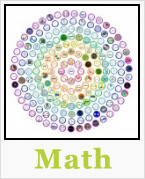



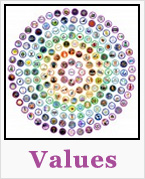
OPEN SOURCE CURRICULUM OUTLINES (click image for summaries and links to complete pages)
CARE
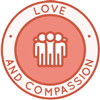
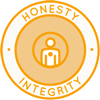
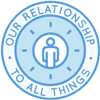
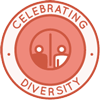
SHARE
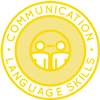
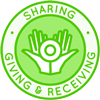

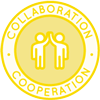
PLAY
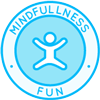
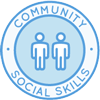
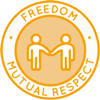
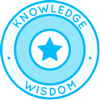
OPEN SOURCE TEACHING METHODOLOGY SUMMARIES
Montessori | Waldorf | Orff | Reggio | Multi-Intelligence | Bloom's Taxonomy | Study Tech | I-WE
INDEX OF ALL THE ONE COMMUNITY OPEN SOURCE LESSON PLANS

Click this image for the Lesson Plans for Life page with links to the rest of the lesson plans
THE WORLD'S LARGEST ONLINE FREE EDUCATION RESOURCE ARCHIVE
RELATED CONTENT AND OTHER RELATED RESOURCES
We're building this resource section. Click here if you have a suggestion or resource for this page.














 One Community
One Community












